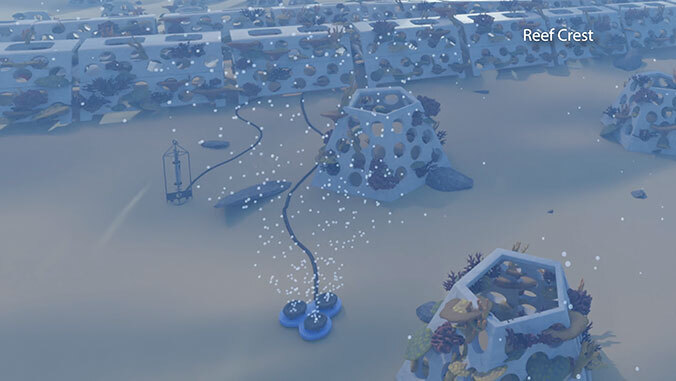
For the first time in its history, the University of Hawaiʻi 10-campus system topped half a billion dollars in extramural funding with a record $505 million in fiscal year 2022 (FY2022), which ended June 30. The record total tops UH’s previous record of $488.6 million in FY2011 and is a $19.5 million or 4% increase over FY2021.
Extramural funding is external investments from the federal government, industry and non-profit organizations that support research and academic activities conducted by university faculty and staff. Extramural projects support research and innovation—increasing knowledge and providing solutions to improve quality of life.
“We are extremely pleased to have reached this significant milestone in our extramural funding history,” said UH Vice President for Research and Innovation Vassilis L. Syrmos. “Much of the credit is due to the hard work and dedication of our faculty, staff and graduate students who keep the UH research enterprise on a steady course despite significant challenges from our economy, world affairs and fallout from the recent pandemic.”
UH Mānoa, the system’s flagship campus, accounted for $366 million of the extramural awards, followed by units at the UH System level ($70.6 million), UH Community Colleges ($43.6 million), UH Hilo ($18.0 million) and UH West Oʻahu ($6.7 million).
UH research expenditures contribute to Hawaiʻi’s economy through business sales, employee earnings, state tax revenue and job creation; and serve as the main component in the diversification of Hawaiʻi’s economy. According to a 2021 economic impact report by the UH Economic Research Organization, UH research-related expenditures of $476.8 million in extramural funding in FY2020 generated $734.8 million in total business sales, $236.9 million in spending, $41.2 million in state tax revenue, while supporting an estimated 5,428 jobs.
“We are incredibly proud to have grown our UH extramural enterprise into a major economic sector for Hawaiʻi that creates thousands of jobs and provides economic stimulation across our islands,” said UH President David Lassner. “Our faculty and staff are collaborating with and training our students to engage in research and problem-solving that addresses the great challenges and opportunities that face Hawaiʻi and the world. This includes everything from climate change and energy solutions to addressing health disparities, educational inequities and training our residents for the jobs of today and tomorrow.”
Several examples of UH programs that attracted the attention of funders:
- The Applied Research Laboratory at UH and UH Mānoa’s School of Ocean and Earth Science and Technology (SOEST) was awarded $5.5 million, part of a five-year $25 million investment by the Defense Advanced Research Projects Agency, to develop an engineered coral reef ecosystem to protect coastlines. Read more on UH News.
- UH received over $11 million for natural resource management programs covering endangered and invasive species, as well as marine and coastal ecosystems protection.
- UH Mānoa’s Hawaiʻi Natural Energy Institute (HNEI) received $6.2 million from the Office of Naval Research (ONR) for its Asia-Pacific Research Initiative for Sustainable Energy Systems for testing and evaluation of renewable generation and power system controls for smart- and micro-grids. HNEI also received $6 million from ONR to continue its research and maintenance support of the U.S. Navy’s Wave Energy Test Site in Kāneʻohe Bay. Read more on UH News.
- The UH System received more than $5 million from ONR for tank inspection (UH Mānoa College of Engineering), hydrogeological research of groundwater and contaminant flow (SOEST) and enhanced water quality testing (UH Mānoa’s Water Resources Research Center) related to the Red Hill water crisis.
- The John A. Burns School of Medicine was awarded $4.6 million, part of a five-year $23 million grant from the U.S. Department of Health and Human Services (DHHS) for Ola HAWAIʻI, a multidisciplinary research center that addresses health disparities in the underserved, multiethnic populations in Hawaiʻi. Read more on UH News.
- UH’s Established Program to Stimulate Competitive Research received $3.5 million, part of a five-year $20 million grant by the National Science Foundation, to integrate climate and data science research under its Change HI initiative. Read more on UH News.
- DHHS awarded $2.9 million to the UH Cancer Center to continue its important Multiethnic Cohort Study. Read more on UH News.
- UH Maui College received $2 million from the National Science Foundation for its Akeakamai I Ka Lā Hiki Ola initiative that encourages and promotes STEM education to Native Hawaiian students.
- UH West Oʻahu received a $1 million donation from the W.K. Kellogg Foundation to create the Hawaiʻi Institute for Sustainable Community Food Systems, a food system transformation hub grounded in complementary STEM disciplines, indigenous knowledge and cultural practices. Read more on UH News.
- UH Hilo’s Center for the Study of Active Volcanoes received $712,000 from the U.S. Department of the Interior to conduct geological, geochemical, geophysical and risk mitigation research related to the Kīlauea, Mauna Loa and Haleakalā volcanoes.

